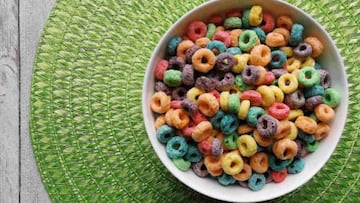Why does the FDA plan to ban the food dye Red No. 3? What it is and its harmful effects
The Food and Drug Administration intends to crack down on the a food dye used to produce a bright red coloring to a wide variety of common food items.


The Food and Drug Administration may finally ban artificial red food coloring used in common candy, cereals, drinks and other food items.
The FDA says they may make a decision regarding Red No. 3, a synthetic food dye made from petroleum, in the next few weeks.
What is Red No. 3?
Red No. 3, also called erythrosine, is an artificial coloring to make products red or pink. It’s commonly used in candy, cereals, baked goods, and drinks, as well as cosmetics and medications.
It’s made from coal tar, an oil-based substance, which serves as the base for its manufacture. The dye has been widely used because it is cheaper to produce than natural alternatives, gives a more consistent appearance, and has a longer shelf life.
However, growing concerns about the coloring’s effects on health have led some companies to phase it out voluntarily. The dye is still approved for use in food products in the U.S., but with the FDA’s statement, its days may be numbered.
READ ALSO: The secret sauce that’s McDonald’s ketchup
READ ALSO: Gossip could be part of human evolution
The harmful effects of Red No. 3
Animal studies and regulatory reviews have revealed some troubling health effects involving consumption of the dye.
The product has been linked to cancer, after a study way back in the 1980s showed a relationship between the dye and thyroid tumors in rodents.
The FDA banned its use in topical drugs and cosmetics in 1990 but continued to allow its use in foods and oral medications due to industry resistance and the lack of direct human studies.
There has also been evidence suggesting a potential link between Red No. 3 and hyperactivity in some children, similar to the effect produced by other synthetic food dyes.
Related stories
Get your game on! Whether you’re into NFL touchdowns, NBA buzzer-beaters, world-class soccer goals, or MLB home runs, our app has it all.
Dive into live coverage, expert insights, breaking news, exclusive videos, and more – plus, stay updated on the latest in current affairs and entertainment. Download now for all-access coverage, right at your fingertips – anytime, anywhere.
Complete your personal details to comment